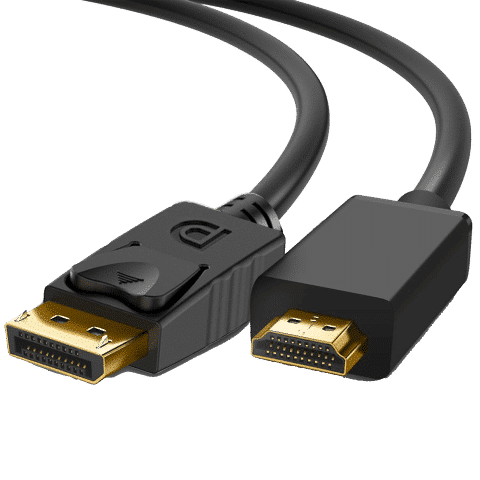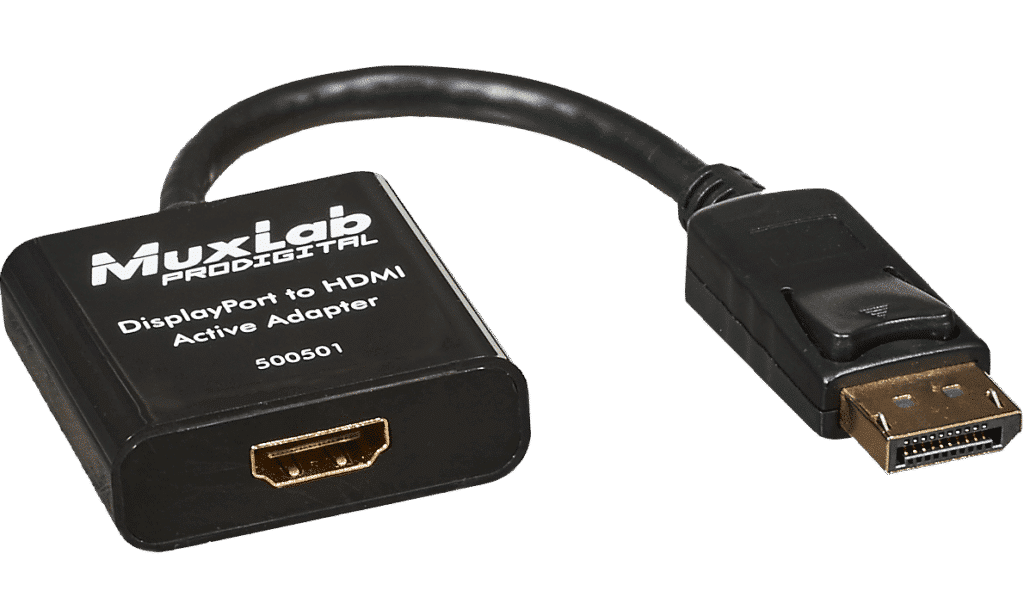Did you recently purchase a HDMI-to-DisplayPort cable and have found it is not working? In this case, it's possible you might have the wrong kind of adapter for your setup. We here at DroiX are here with a short blog post to help you figure out a solution that might help remedy your situation.
What is a converter/adapter?
A display converter or adapter in short is a perphiperal that enables you to connect two separate devices even though they utilize different physical interfaces.
In practice, this would most likely come up when you are trying to use an older monitor/screen with a newer device you've purchased, or vice versa.
With that in mind, there are two main types of adapter to consider:
Passive Adapter
These are what will come up typically when you google „hdmi-to-displayport cable" or similar.
A passive Adapter is a cable with one interface on the end, and one interface on the other. It does not affect the signal being transmitted.
Because of this, if your device outputs a signal from a port that isn't compatible with the target device, it will not work.
Passive adapters are usually substantially cheaper than active adapters. It's a good idea to have one or two common ones lying around if you are the type of person to keep electronics for a long time.
Active Adapter
Active adapters are a more hands-on counterpart to their passive contemporary.
An active adapter- as well as providing a bridge between two different interfaces - will actively convert one signal from another as it is being transmitted, independent of the devices.
This means that the adapter can be more freely used to connect different devices, as there is less need to worry about what kind of signal is being output or received.
Active adapters are generally slightly more bulky than passive adapters due to the additional components required in the cable.
Why is my HDMI-to-DisplayPort (etc.) cable not working?
There's three possible reasons for this.
- The device you are using does not output the required signal through your chosen port. Meaning that you will need an active adapter.
- The cable itself is faulty. In which case, you'll need to get a new one.
- The device itself has a faulty port. You'll likely need to contact the seller, or a third party that can resolve this.
The dichotomy between „passive" and „active" adapters is something that is not widely known, and for most people, likely will not be something that is necessary to understand, given as how many devices nowadays are capable of flexibly outputting a signal in such a way that only a passive adapter is needed. But nonetheless, with this knowledge under your belt, take a second to consider your situation and options if you encounter such an issue with adapters in the future.
Until next time!
In the market for a mini PC with a particular video output? View our range of devices here for more information! https://go.droix.co.uk/MINI-PC













